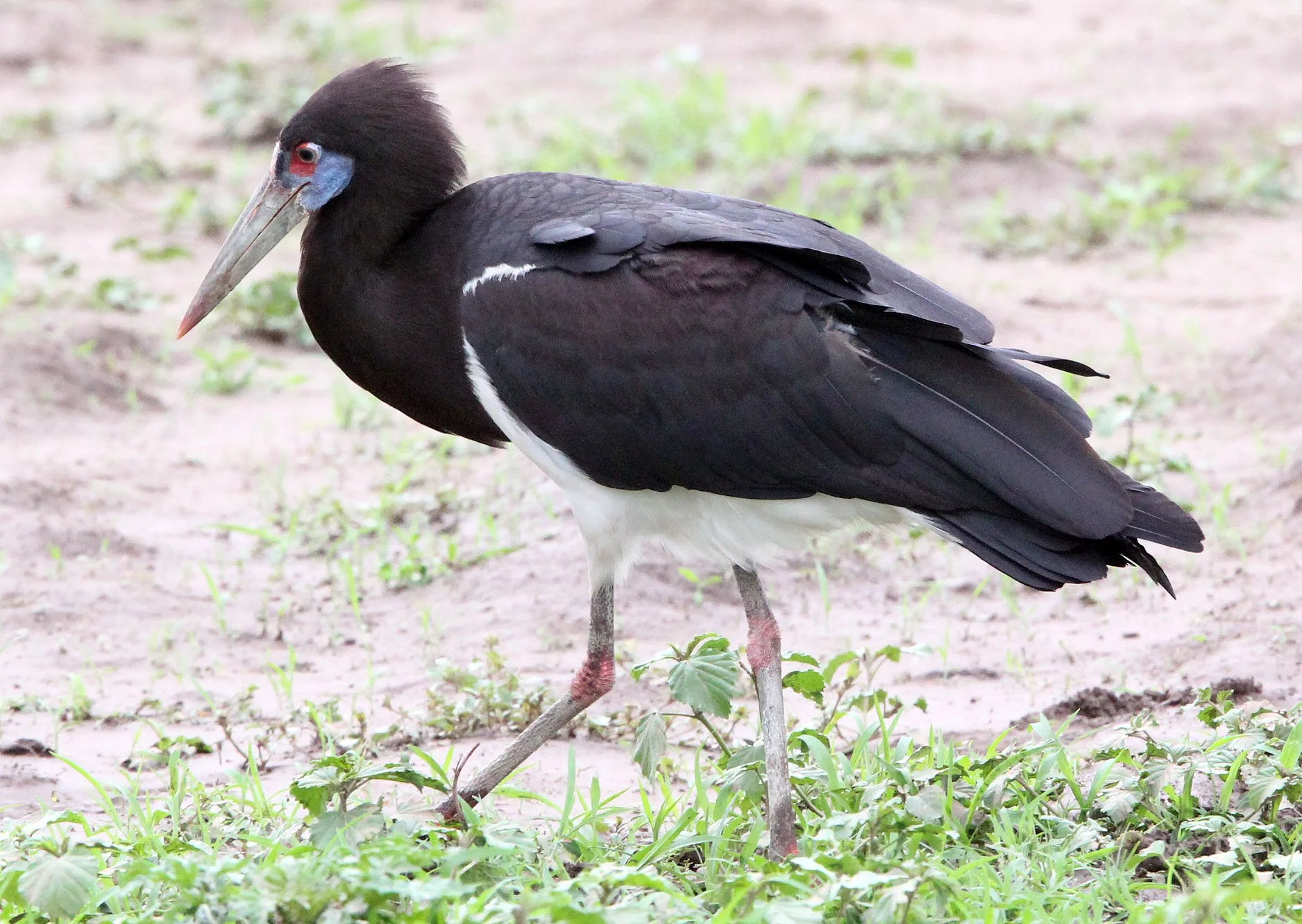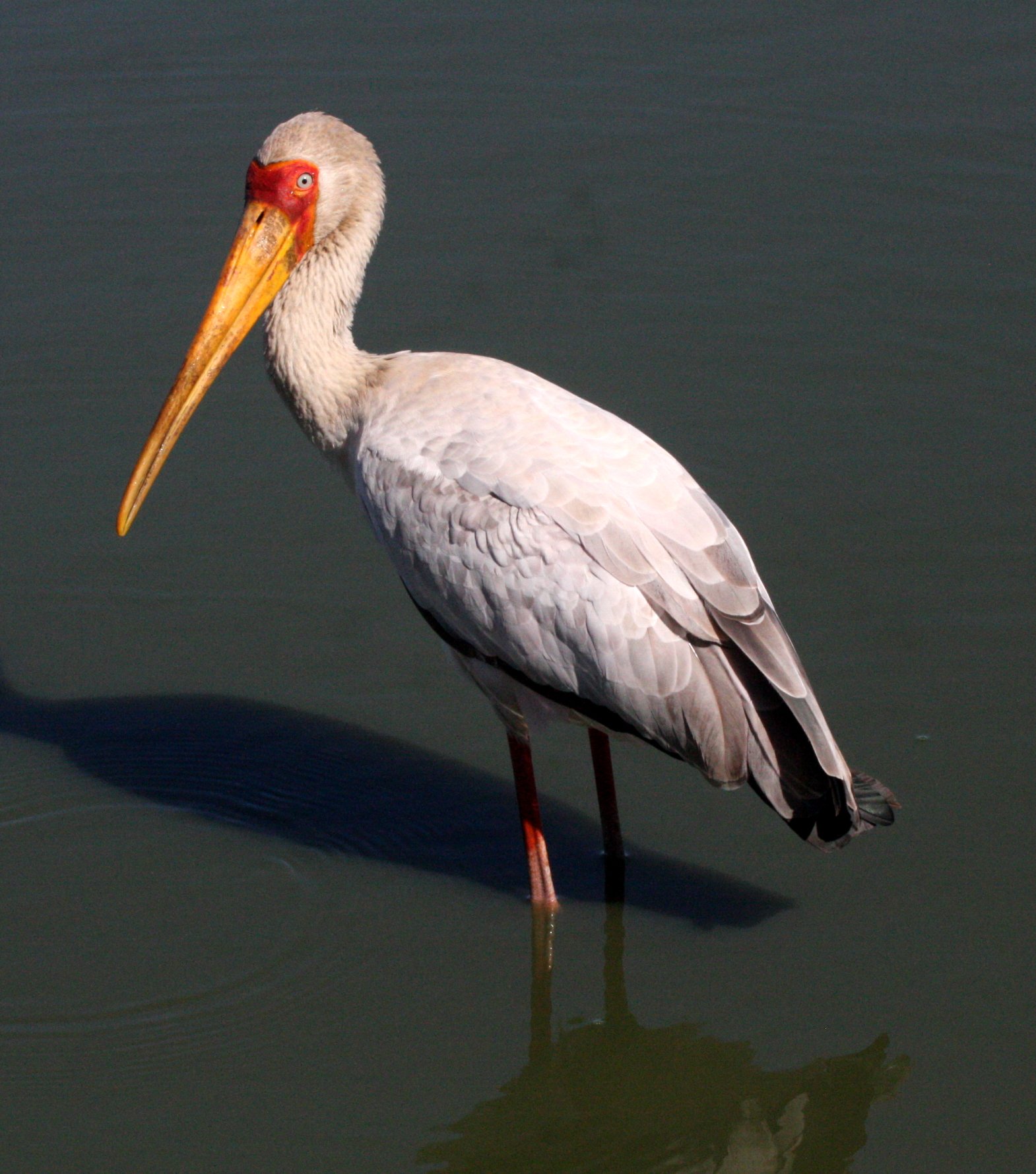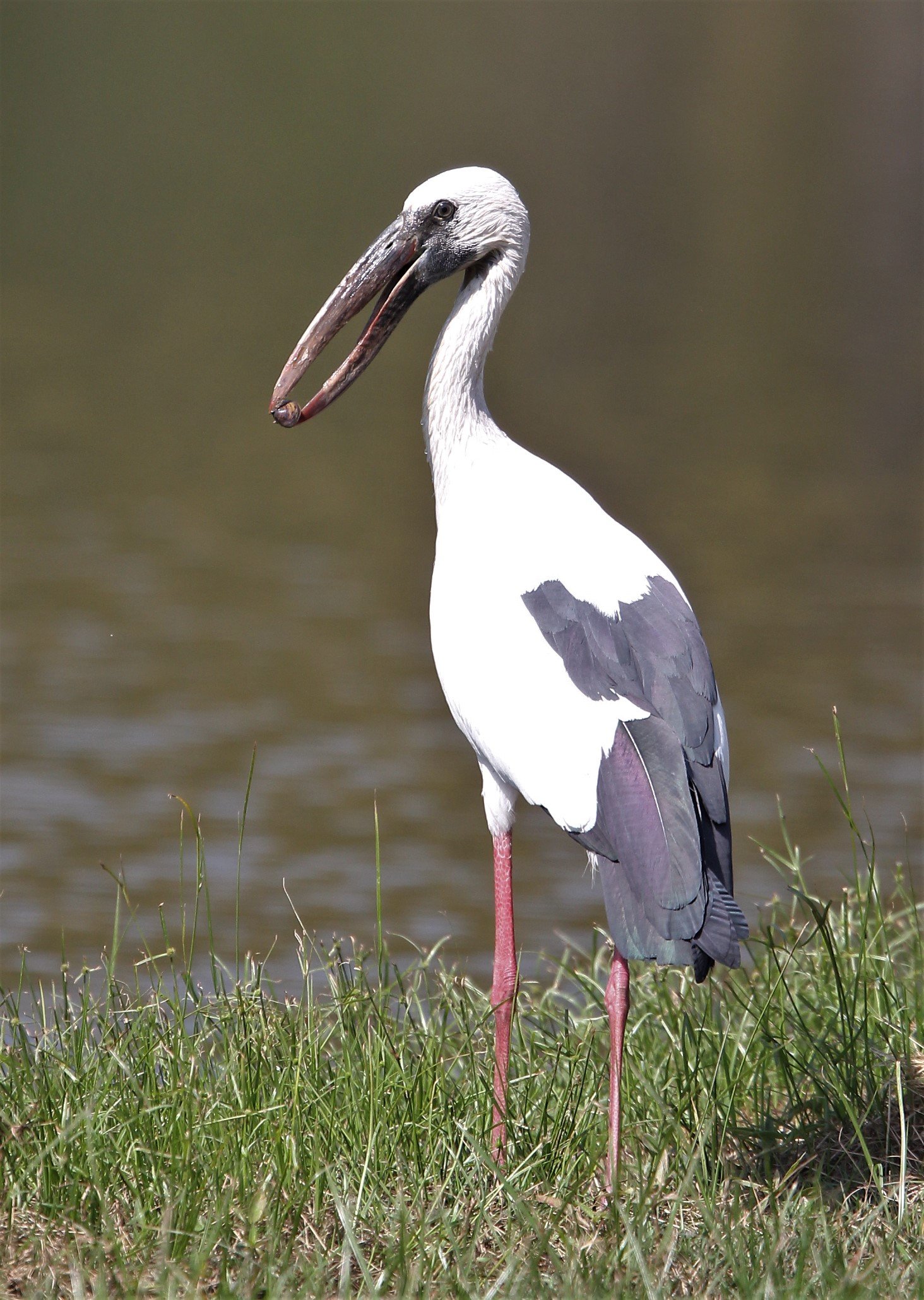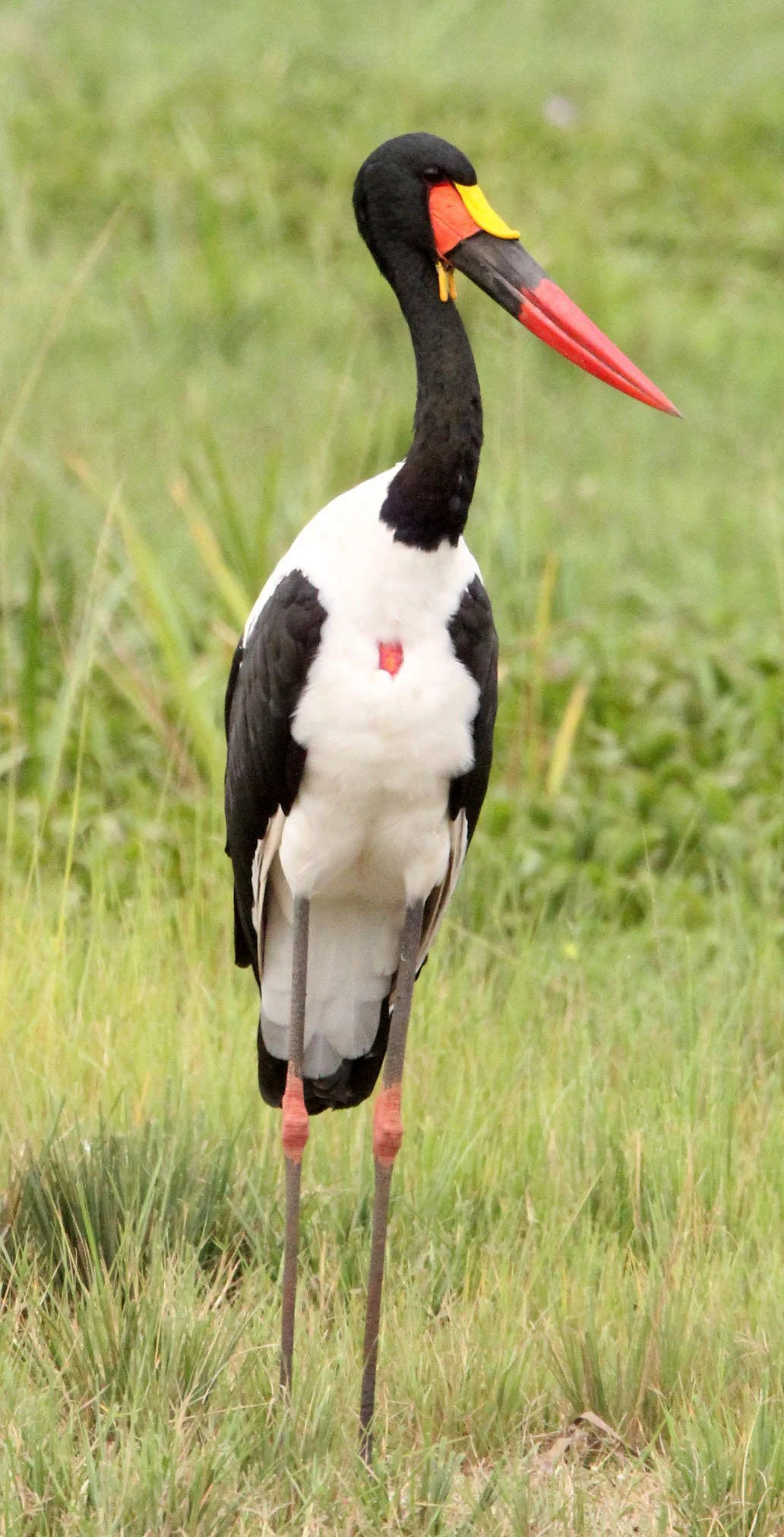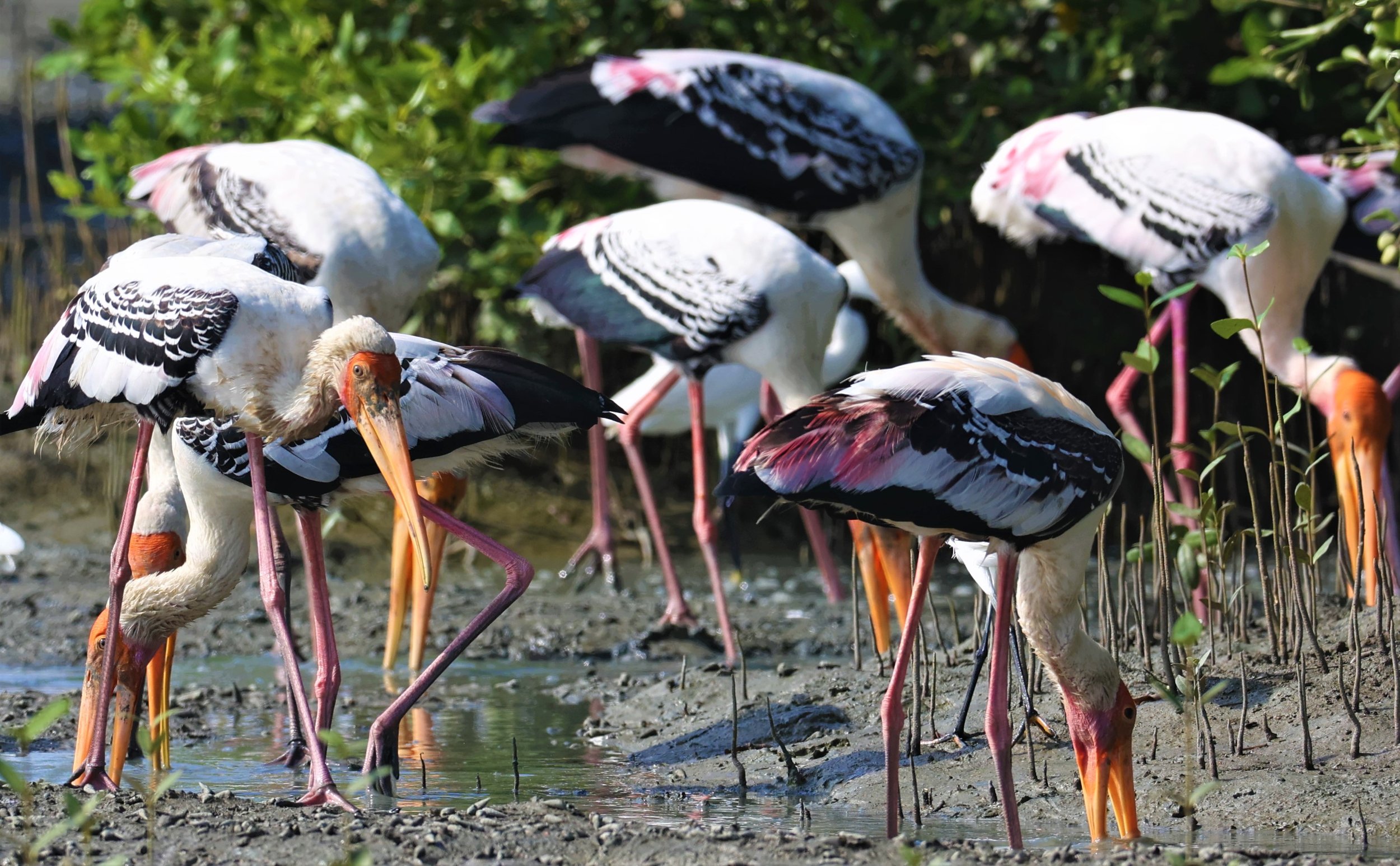
Family Ciconiidae, Storks

Storks are large, long-legged, long-necked wading birds with long, stout bills. They belong to the family called Ciconiidae, and make up the order Ciconiiformes. Ciconiiformes previously included a number of other families, such as herons and ibises, but those families have been moved to other orders.
Abdim’s Stork, an Ethiopian endemic
Storks dwell in many regions and tend to live in drier habitats than the closely related herons, spoonbills and ibises; they also lack the powder down that those groups use to clean off fish slime. Bill-clattering is an important mode of communication at the nest. Many species are migratory. Most storks eat frogs, fish, insects, earthworms, small birds and small mammals. There are 19 living species of storks in six genera.
Various terms are used to refer to groups of storks, two frequently used ones being a muster of storks and a phalanx of storks.
Storks tend to use soaring, gliding flight, which conserves energy. Soaring requires thermal air currents. Ottomar Anschütz's famous 1884 album of photographs of storks inspired the design of Otto Lilienthal's experimental gliders of the late nineteenth century. Storks are heavy, with wide wingspans: the marabou stork, with a wingspan of 3.2 m (10 ft 6 in) and weight up to 8 kg (18 lb), joins the Andean condor in having the widest wingspan of all living land birds.
Their nests are often very large and may be used for many years. Some nests have been known to grow to over 2 metres (6 ft 7 in) in diameter and about 3 metres (9.8 ft) in depth. All storks were once thought to be monogamous, but this is only partially true. Some species may change mates after migrations, and may migrate without a mate.[citation needed]
Storks' large size, serial monogamy, and faithfulness to an established nesting site contribute to their prominence in mythology and culture.[citation needed]
All 20 stork species have been assessed by the IUCN and carry a confident Red List status. However, this assessment appears to be based on incorrect assumptions and a general absence of sound information on stork habits, suggesting that basic studies on many storks are needed.
Asian Openbill are very common currently in Southeast Asia
Storks have a nearly cosmopolitan distribution, being absent from the poles, most of North America and large parts of Australia. The centres of stork diversity are in tropical Asia and sub-Saharan Africa, with eight and six breeding species respectively. Just three species are present in the New World: wood stork, maguari stork and jabiru, which is the tallest flying bird of the Americas. Two species, white and black stork, reach Europe and western temperate Asia, while one species, Oriental stork, reaches temperate areas of eastern Asia, and one species, black-necked stork, is found in Australasia.
Storks are more diverse and common in the tropics, and the species that live in temperate climates for the most part migrate to avoid the worst of winter. They are fairly diverse in their habitat requirements. Some species, particularly the Mycteria "wood storks" and Anastomus openbills, are highly dependent on water and aquatic prey, but many other species are far less dependent on this habitat type, although they will frequently make use of it. Species like the marabou and Abdim's stork will frequently be found foraging in open grasslands of savannah. Preferred habitats include flooded grasslands, light woodland, marshes and paddyfields, wet meadows, river backwaters and ponds. Many species will select shallow pools, particularly when lakes or rivers are drying out, as they concentrate prey and make it harder for prey to escape, or when monsoonal rainfall increases water depth of larger waterbodies. Some species like the woolly-necked storks and lesser adjutant storks have adapted to changing crops of tropical agricultural landscapes showcasing behavioral plasticity that enables them to remain resident despite the transformations brought about by seasonal crops. In South Africa, the woolly-necked storks have adapted to artificial feeding and now largely nest on trees in gardens with swimming pools.
Storm’s Stork from Sabah, Borneo
Less typical habitats include the dense temperate forests used by European black storks, or the rainforest habitat sought by Storm's stork in South East Asia. They generally avoid marine habitats, with the exception of the lesser adjutant, milky stork and wood stork, all of which forage in mangroves, lagoons and estuarine mudflats. A number of species, especially woolly-necked storks, black-necked storks, Asian openbills and lesser adjutant Storks in south Asia, have adapted to highly modified human habitats, either for foraging or breeding or both. In the absence of persecution several species breed close to people, and species such as the marabou, greater adjutant, and white stork will feed at landfill sites.
The below galleries have images for all species of Stork that I have been lucky to have seen and documented in the wild. Maguari was added to the list in the summer of 2023. Now I have seen all extant species in the world!

Milky Stork (Mycteria cinerea)
Wood Stork (Mycteria americana)
Yellow-billed Stork (Mycteria ibis)
Asian openbill (Anastomus oscitans)
Painted Stork (Mycteria leucocephala)
African Openbill (Anastomus lamelligerus)

Abdim’s Stork (Ciconia abdimii)
Storm’s Stork (Ciconia stormi)
Asian Woolly-necked Stork (Ciconia episcopus)
Oriental Stork (Ciconia boyciana)
African Woolly-necked Stork (Ciconia microscelis)
White Stork (Ciconia ciconia)

Black Stork (Ciconia nigra)
Jabiru Stork (Jabiru mycteria)
Black-necked Stork (Ephippiorhynchus asiaticus)
Lesser Adjutant Stork (Leptoptilos javanicus)
Marabou Stork (Leptoptilos dubius)
Saddle-billed Stork (Ephippiorhynchus senegalensis)
Greater Adjutant Stork (Leptoptilos dubius)
Maguari Stork (Ciconia maguari)
